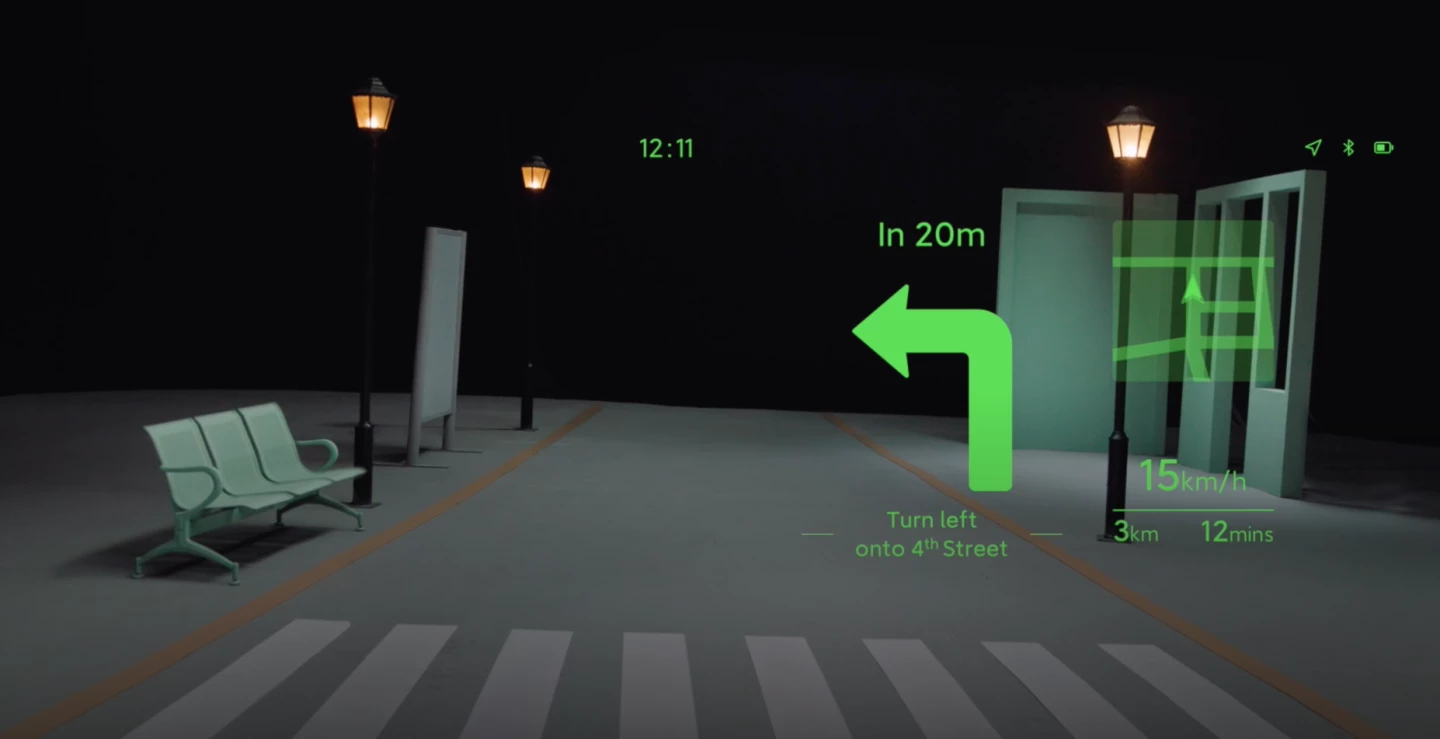Hot on the heels of Facebook's Ray-Ban Stories comes a pair of concept smart glasses from Chinese tech firm Xiaomi that don't just push notifications from a smartphone, but also sport some nifty independent functionality.
Like the Ray-Ban Stories wearables, the Xiaomi Smart Glasses have been designed to look pretty much like an ordinary pair of eye-glasses, but unlike Facebook's effort they feature an imaging system that augments the wearer's view with such things as incoming call alerts, turn-by-turn navigation prompts and real-time text/photo translations.

This info is sent to the wearer's field of view thanks to a MicroLED display chip measuring 2.4 x 2.02 mm – or roughly the same size as a grain of rice – with individual pixels of 4µm. To maintain image integrity even in direct sunlight, Xiaomi opted for a high-brightness monochrome display rather than full color, with the light routed to the eye via optical waveguides etched onto the inside of the right lens.
"The refraction process involves bouncing light beams countless times, allowing the human eye to see a complete image, and greatly increasing usability while wearing," explained the company. "All this is done inside a single lens, instead of using complicated multiples lens systems, mirrors, or half mirrors as some other products do. Optical waveguide technology significantly reduces device size and weight, and therefore allows smart glasses to approach the form factor of traditional glasses."

That said, the Smart Glasses are reported to be made up of almost 500 components that include such things as a quad-core ARM processor, battery, touch pad, various sensors, Wi-Fi/Bluetooth modules, and they run their own Android operating system.
The setup means that the wearables don't merely act as a second screen for a paired smartphone, but can independently supply navigation prompts as the user wanders through an unfamiliar part of a city, translate the text written on, say, a menu into the native language of the wearer with the help of a built-in 5-MP camera, translate text contained in a photo, and more. Naturally that camera can also be used for snapping photos, with a small light indicating when the camera is use.

The glasses include dual beamforming microphones and a speaker so they can also field calls from the paired phone, allow for voice interaction with digital assistants, push notifications through, and receive messages from important contacts.
Xiaomi reports that the Smart Glasses weigh in at just 51 g (1.8 oz), but hasn't said if there are plans to take them into production. So for now, Facebook and Snapchat can rest easy. The video below has more.
Source: Xiaomi







